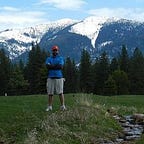5 Ways To Explore The Global Graph Celebration Day Attendee Graph
Get Involved with GGCD And Find Connections To The Community!
The second annual Global Graph Celebration Day is only two months away! In this post, we want to show you how you can explore the GGCD Attendee Graph to find connections in the community. We have more in common than you think!
What is Global Graph Celebration Day?
To honor Leonhard Euler, the Swiss mathematician and inventor of graph theory, the Neo4j community and graph-enthusiasts all over the world gather and host events to celebrate the day of his birth, April 15th. Check out the blog post for information on how to find an event near you or host one yourself!
Last year was the first official GGCD and there were more than 60 events on six continents!
What’s The GGCD Attendee Graph?
When you RSVP to a GGCD event you can choose to optionally share what technologies you use, what industry you work in, your interests, and more. This information is anonymized and stored in a public Neo4j Aura instance so that the graph community can see things we have in common, learn how others are using graphs and Neo4j, and discover new technologies and tools that we might be interested in.
As part of Global Graph Celebration Day, we want you to explore the GGCD Attendee Graph and we’re going to feature the top-10 most-interesting queries, visualizations, or apps built around the attendee graph in one of our GGCD re-cap blog posts.
Here are a few ways you can get started exploring this data:
1) Query In Neo4j Browser
The data is available in a public Neo4j Aura instance that you can access here:
https://88f0bc82.databases.neo4j.io with the username events and password events
In Neo4j Browser you can write Cypher queries to query the dataset and visualize the results. Use the CALL db.schema() command to see the data model which can give you an idea of the type of queries you can write.
Here’s a Cypher query to get you started:
MATCH
(t:Tool)<-[:USES]-(p:Person)-[:INTERESTED_IN|:ATTENDING]->(o)
WHERE t.name = "Javascript"
RETURN *Can you find the other attendees of the event you’re attending? What is the most common programming language used by the other attendees?
2) Build A Graph Visualization
Whether with neovis.js, 3d-force-graph, or Neo4j Bloom graph visualization tools can help you make sense of and interpret graph data at a glance.
For ideas on how to get started with creating visualizations with data from Neo4j, check out some of the popular blog posts on the Neo4j Developer Blog about graph visualization
3) Query Using iPython Notebooks
iPython notebooks allow us to combine data from Neo4j with popular Python data science tools like pandas, matplotlib, scikit-learn, NLTK, and more.
We put together a starter notebook that shows how to use the Python Neo4j driver to query the GGCD attendee graph, load it into a pandas DataFrame and create a simple chart of the most common use cases using matplotlib. It also shows how to use the TextBlob NLP library to find keywords and entities in event descriptions:
Try it here:
https://colab.research.google.com/github/johnymontana/ggcd-samples/blob/master/notebooks/ggcd.ipynb
4) Query Using GraphQL
There’s also a GraphQL API exposing this data which you can query at globalgraphcelebrationday.com/graphql This GraphQL API uses neo4j-graphql.js to easily build a GraphQL API backed by Neo4j.
GraphQL makes it easy to express data fetching logic in a single request to the backend. You can learn more about GraphQL in the Neo4j developer guides.
For example, here’s a query to find all events within a 10km radius and show some information about the interests of the attendees:
{
Event(
filter: {
point_distance_lt: {
point: { latitude: 47.4979, longitude: 19.0402 }
distance: 10000
}
}
) {
name
location
attendees {
name
works_in {
name
}
uses {
name
}
}
}
}5) Build An App
Either using one of the Neo4j language drivers or the GraphQL API, build an application that queries Neo4j and shows the results. You can build an app that makes it easier to find friends with similar interests at the GGCD events or an application to find events near you!
For examples of applications you build that use GraphQL, check out the GRANDstack starter UI implemented in React or Angular.
Share What You’ve Built!
Whatever you come up with, put it online (Github gist, google doc, app URL, github repo, etc) and submit your URL with a short description of what it is below.
